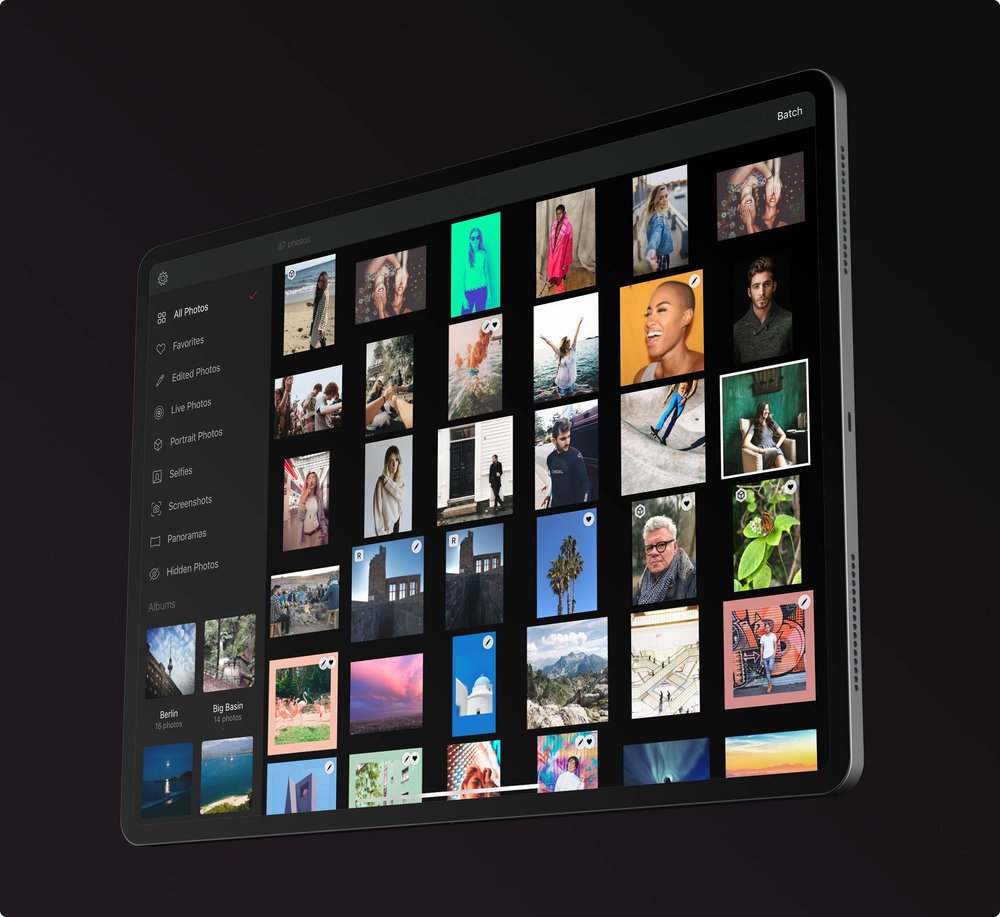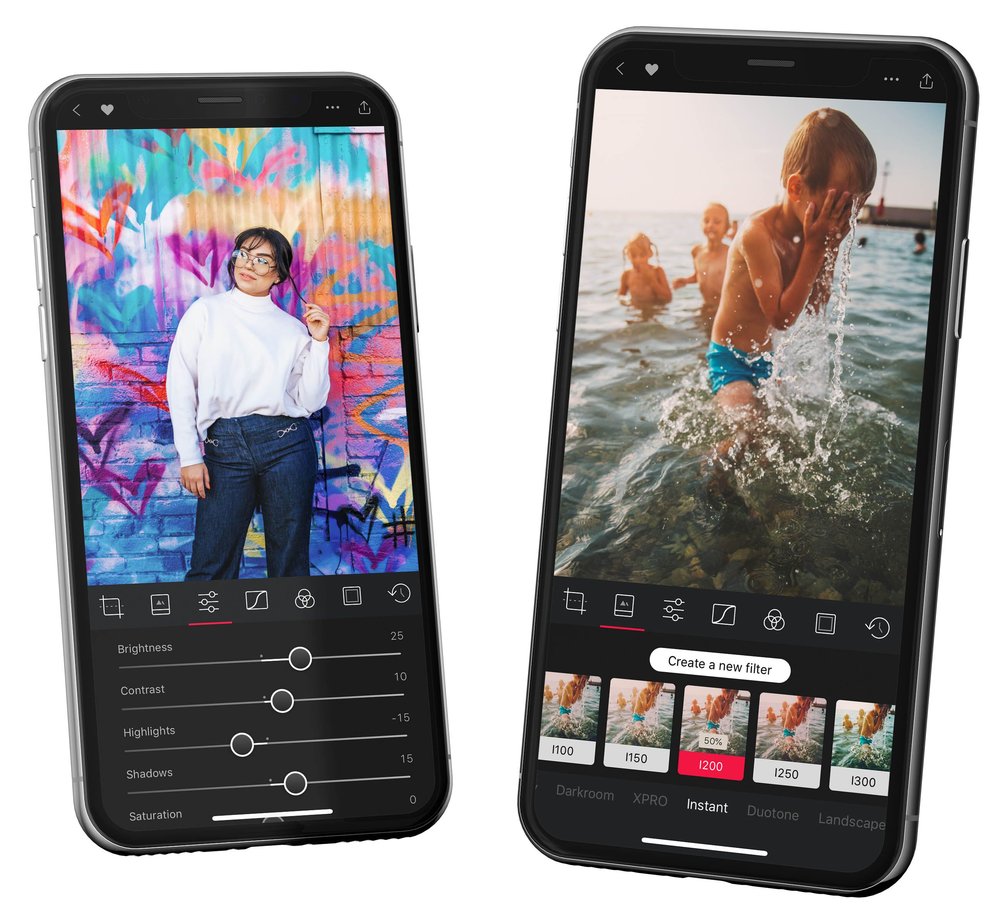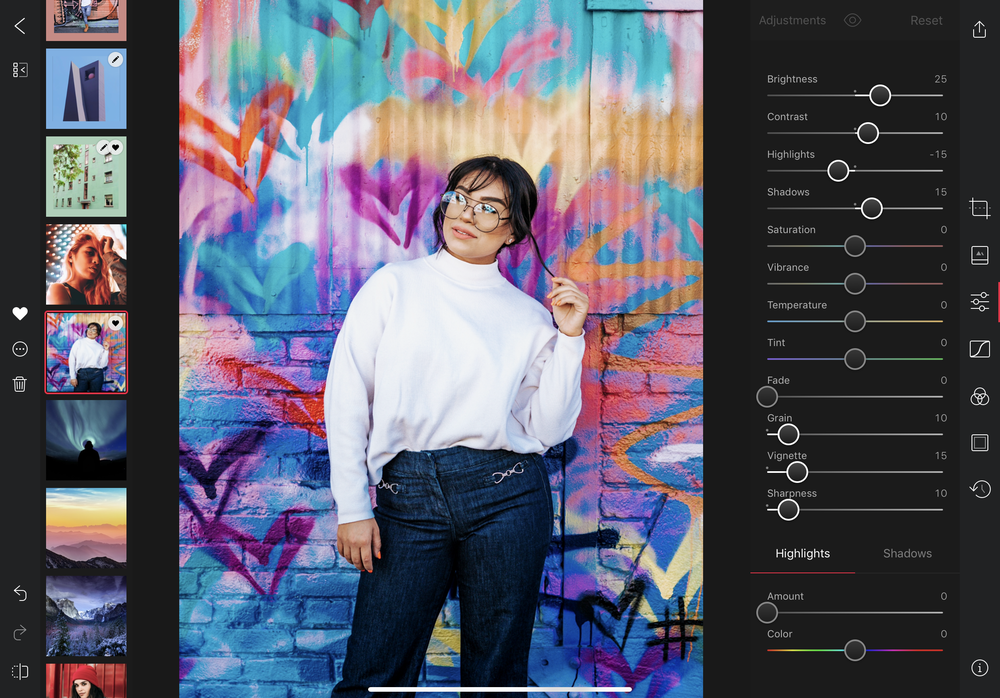
While I continue with Lightroom because it’s familiar territory and I am too lazy to try alternatives, I know that there are many applications out there that are cheaper and, many say, more satisfying to use. These include Capture One Pro, DxO Photo Lab and Affinity Photo. Here is an overview of the ten best alternatives.
These days, however, there is increasing interest in editing on tablets or, even, smartphones. I have one or two friends who are great photographers and who rely entirely on the iPad for editing. Some use Apple’s Photos app while others use Lightroom Mobile. There is another strong contender in Darkroom and the thorough and informed Mac-centric blog, MacStories, has carried a full review of Darkroom by staff writer John Voorhees.

I have a great regard for Federico Viticci and his team at MacStories and first read there about a number of applications that have now become a mainstay of my workflow. They include Ulysses, Things, and Spark; just recently I’ve been introduced to Agenda which I am now looking at carefully with a view to using it exclusively for planning Macfilos stories.

Voorhees has done a great job of investigating the uses of Darkroom and concludes:
Despite a couple of rough patches, I’m impressed with what Darkroom has become. There’s a lot more to this app than fun filters. With RAW support, a wide range of tools, and iPad support, Darkroom is a full-fledged photo editor. Darkroom also scales nicely from the smallest iPhone screen to the biggest iPad and takes advantage of the unique hardware each iOS device has to offer.
Especially on an iPad, Darkroom does an excellent job of offering the tools you’ll want to edit your photos without getting in the way, allowing the photos room to breathe as you edit. I’m glad I have the ability to edit in Darkroom on my iPhone, but the iPad is where the experience is best, which is why it’s great to have that option with the release of Darkroom 4.0.
I haven’t yet had the chance to try out Darkroom 4.0 but an endorsement from MacStories is all the incentive I need, especially now I have my new 12.9in iPad Pro, Smart Keyboard cover and Apple Pencil (which is convincing me that writing on glass isn’t such a bad idea after all). I’ll be telling you more on that in a future article.
Darkroom is free but advanced features require in-app purchases, most of them reasonable, ranging from £1.99 to £9.99. The £9.99 deal, Pro Tools and Premium Features, seems to include most of the other options which can be bought separately.

Firstly, I reckon that the iPad (in particular) is hamstrung by only sporting IOS rather than MACOS, but the inclusion of the USB C socket in the place where the lightning socket used to be, suggests that things may be about to change. Whether that means a complete switchover to the latter, time will tell.
Secondly, all these tools are essentially doing the same thing. The important thing, rather than loyalty to one particular eco system, is doing what makes sense. I have been using Iridient Developer for my black and white (and some colour) film, in relation to my scanner for several years. It is a very limited application, but what it does, it does well.
The reason that I started using it, was that when I wanted an application that would read the output from my now broken Nikon scanner, Brian Griffith was the only developer/app vendor, that could be bothered to indulge me.
Even though I had two fully paid copies of Lightroom from Adobe, following a long support call, which I paid a premium for, I was told that unless I purchased a licence key for the last version of Lightroom that had support for that scanner, they would not be able to support me. That was Lightroom 2, and it meant another purchase and no support for my camera. I always found that program clunky anyway, using a massive wodge of the system and running like a dog, where the former uses less than a megabyte is very light on its feet.
I have since investigated a good number of the cheaper apps, seeing as they all do the same thing, and I have found a few gooduns. For instance, the one that works well with Apple Photos, "Raw Power" is written by Nik Bhatt, the guy that was in charge of Aperture before Apple abandoned its customers. He has designed it that so that it can be called from within "Photos", or run stand alone. It’s not perfect, but it is improving, and is quite good for quick mods and raw support.
Then there are the ones that can do everything, but all seem to fit in the Adobe "clunky" category, but are also either free, or damn near it, like PhotoScapeX, or Darktable. I find myself using these when I want to do something that Iridient or Raw Power won’t.
I wanted to like Affinity, because it is an old British company (Serif), but this program wants to emulate Lightroom and do everything, only not quite as well… There are a number of apps in the same neck of the woods, less than £100, doing what Lightroom does.
Anyway, as I suggest, they are all really doing the same thing, and the only thing anyone needs to be slavish to, is ones own sanity.
I still haven’t made my decision regarding the choice between a MAC lappy and an IOS paddy, but as before, I am still leaning towards the former. Will now read the referenced piece to see whether Federico Viticci will change my mind. 🙂
I edit pictures on a 2013 13” MacBook Air.
I don’t use Lightroom, and I don’t use Photoshop – though I did subscribe, for a while, to Ming’s Photoshop course ..but that seemed to consist mainly of “drop a gradient from here to here..” and so no wonder, then, that most of his pictures look (..to me..) unnatural – and identically unnatural.
I use Viveza 2 (it was advertised in an old issue of LFI, so I bought it) and that allows tweaks at any place in a photo ..for example, for lightening a face that’s in the shade.
I use PhotoNinja 2 (..which is derived from NoiseNinja, for reducing ‘noise’ in photos..) and that allows geometrical corrections (to correct converging lines or curved ‘fisheye’ lines) as well as dozens of other corrections and adjustments.
I use Apple’s iPhoto (not the newer ‘Photos’) to catalogue everything, and to make overall corrections if need be, but it can’t do targeted corrections like Viveza does.
I used to (occasionally) use FocalPoint 2, but that got absorbed into ON1 Photo (or ON1 Photo RAW) but without the same flexibility and facility to paint-in blur or sharpness. I still use ON1 for defocusing, occasionally.
For occasionally painting out obtrusive bits and bobs – like electricity cables or fence-posts – I use the simple but very effective ‘Retouch’ facility in iPhoto.
I’ve got a whole pile of DxO OpticsPro and Photolab versions and updates, but hardly ever seem to use them (can’t remember what they do) and ditto Adobe Photoshop Elements ..which I’ve used mainly to handle plug-ins which I’ve sometimes bought, such as ‘PearlyWhites’ to improve the look of teeth in digital photos, and a fisheye-straightener.
But most of what little I do, I do in iPhoto.
How many pics have I got in my main iPhoto Library? ..43,028, and 1,131 little videos shot on various stills cameras. The iPhoto Library – well backed-up – sits on an external USB3 Solid State Drive, so that it runs really fast, and isn’t interrupted by the onboard SSD’s ‘housekeeping’ jobs.
(Real videos, shot with real video cameras, go elsewhere, onto dedicated video storage discs.)
And if pictures are to be sent anywhere by email, I use PhotoShrinkr to reduce their file-sizes by about 80%, without damaging the look of them.
I try as far as possible to get things right in the camera, and then make minimal adjustments afterwards. (I do turn the camera(s) up to ‘Vivid’, as that’s how I like my pictures, because I’m rather red/green colourblind.
I wouldn’t want to edit on an iPhone or iPad ..too small and fiddly for me: I use the phone as a diary, and I use the iPad for reading books. The 13” MBA (MacBook Air) is the perfect mix, for me, of small and light, big enough to edit photos, got enough sockets on the sides (two USB3 connections, headphones, ‘Thunderbolt’ for assorted accessories, SD card slot for importing pics. And magnetic snap-off charging connection. Brilliant!
I use Lightroom 5, Luminar 2018 and GIMP. Does everything I need, without getting stuck in multiple cycles of production. In fact Lightroom 5 deals with 90% of stuff I do, and Luminar is my back up for the day Lightroom is switched off by a Mac OSX update that switches it off.
Any sign of computational features which allow merging of different images, perhaps taken at the same time with different lenses? Early leaks of the iPhone XI show a phone with 3 lenses which points towards computational features and, of course, the forthcoming Lumix SR cameras will have some features like this, but will rely on one taking lens. I use Lightroom and Photoshop on an iMac. Big issues for me on an iPad would be cropping and straightening. I cannot imagine how my clumsy figures would handle this type of thing on an iPad. Apple needs to get back to real innovation now that Samsung and Huawei and others have stolen some of their market share. The problem with the pace of innovation in the 21st Century is that existing patents don’t really protect market share. It really is a case of innovate or die.
William